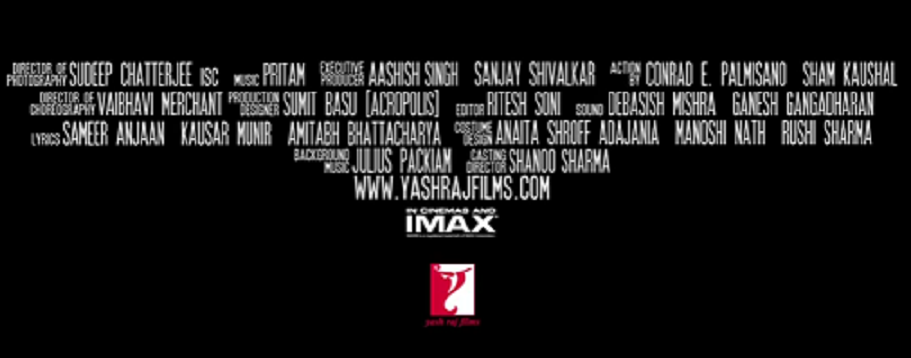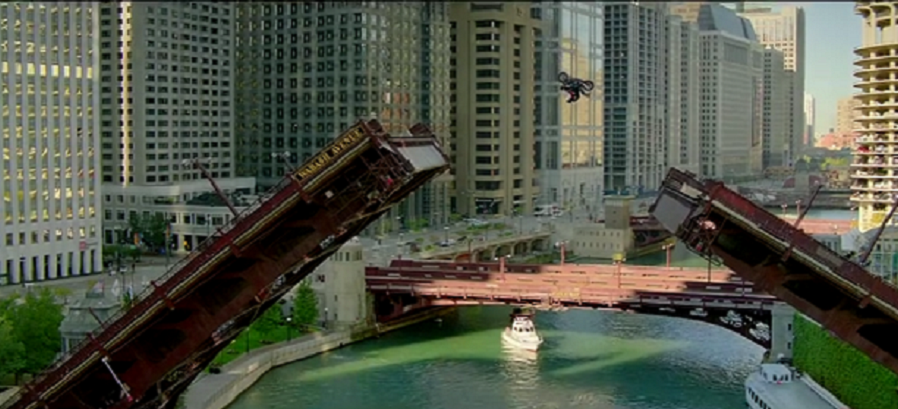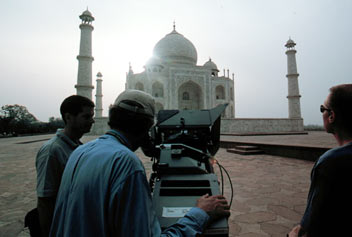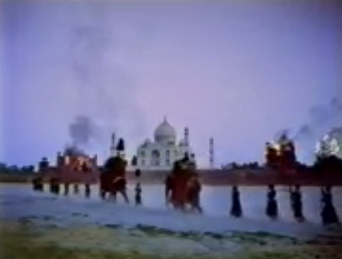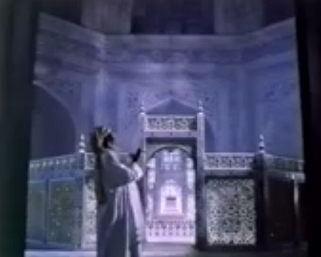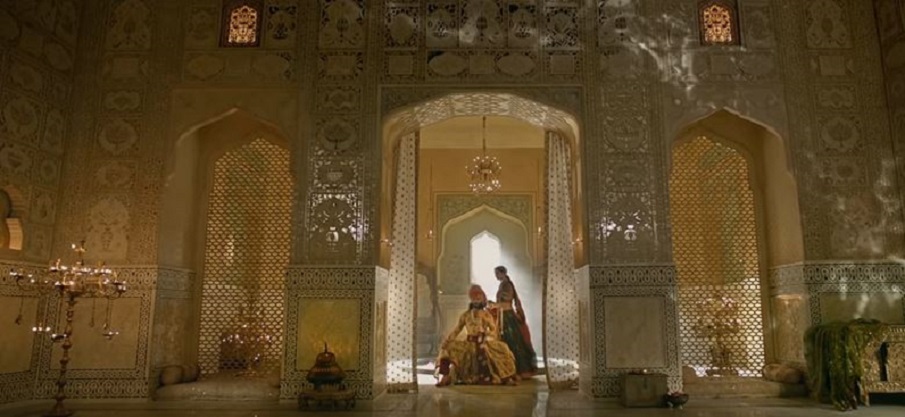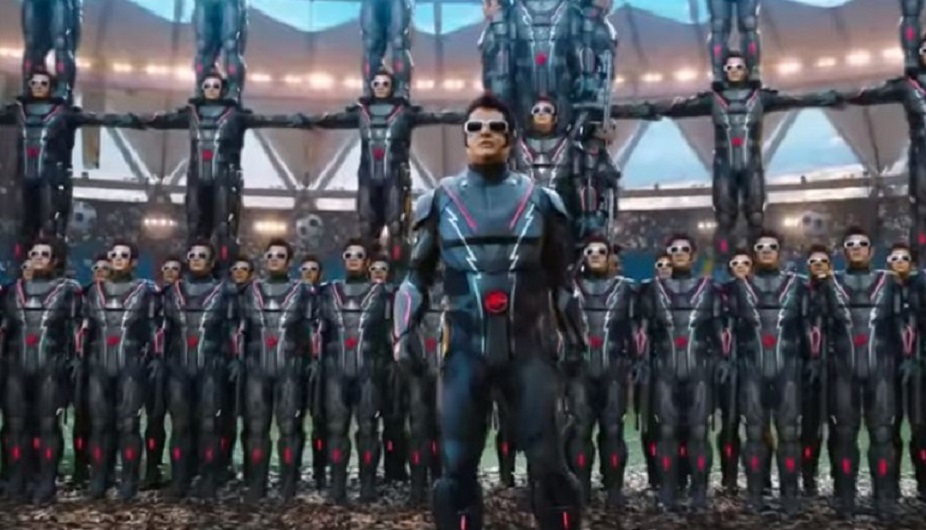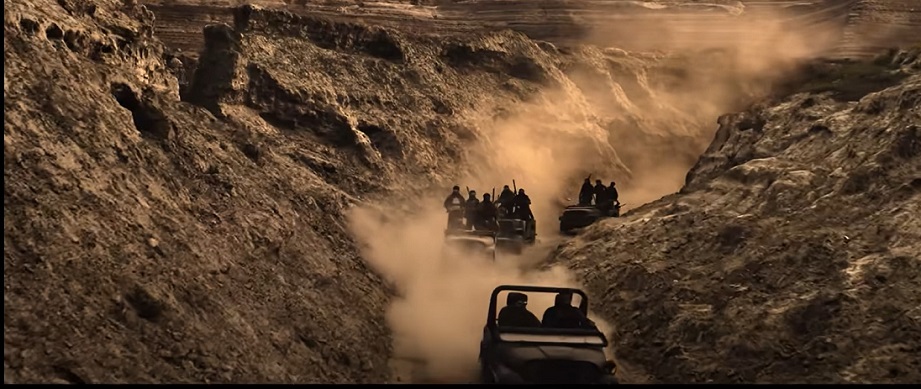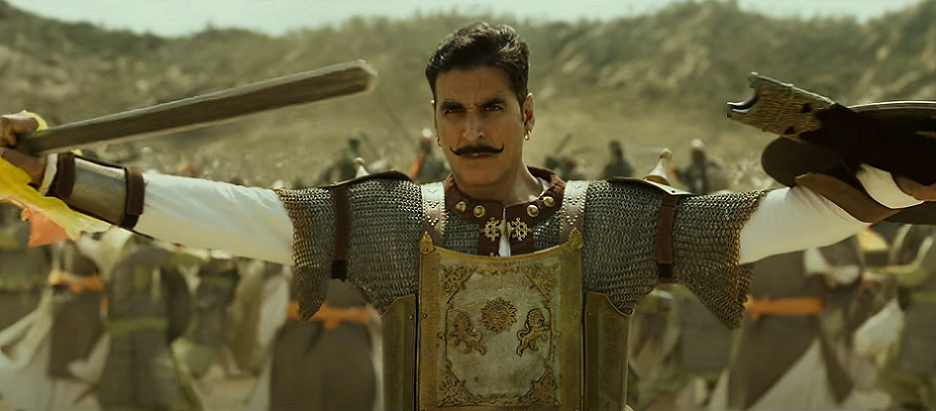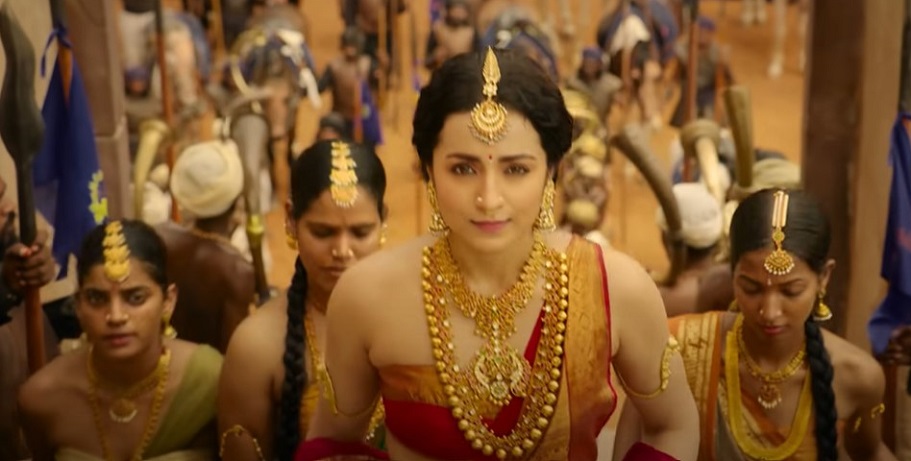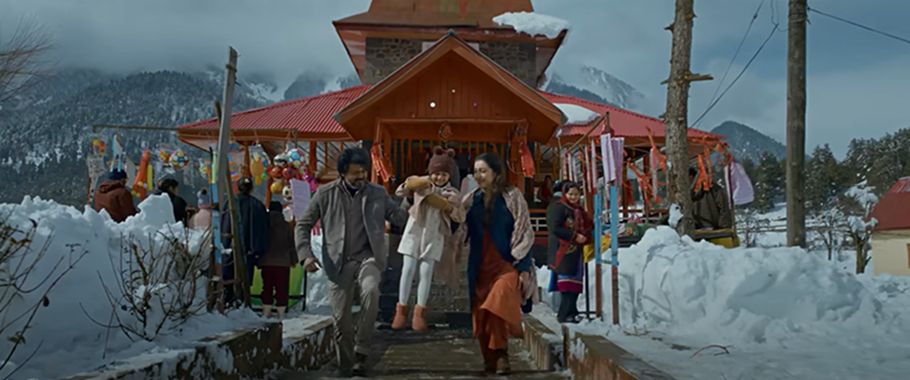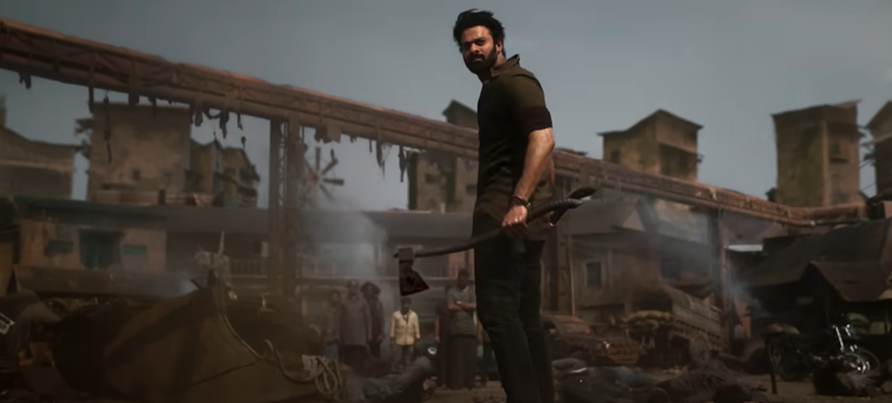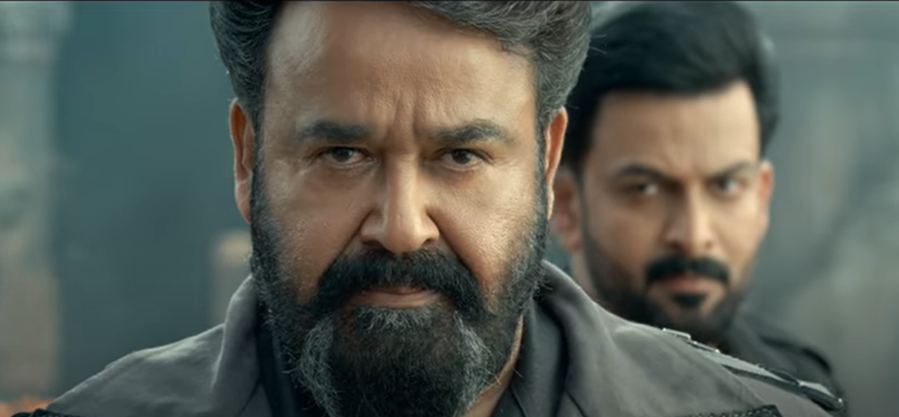IMAX in India
This is a collection of articles archived for the excellence of their content. |
If the official website of IMAX has an answer to the basic question i) ‘What is IMAX?’ it must be hidden somewhere deep inside, where no lay reader can reach. Nor could we find on that site ii) a complete list of IMAX theatres in South Asia, iii) the heights and widths of their screens, or iv) the titles of forthcoming IMAX films produced in India/ South Asia.
In response to Search queries about IMAX theatres in Bangladesh, Pakistan and Sri Lanka, we got the same answer each time: ‘There are no IMAX theatres within 50 miles of your location.’
Writing to the Contact Us section of that site was of no use. They referred us back to their site, which answers nothing.
Therefore, information has been obtained from other sources.
What is IMAX?
IMAX is a system by which films (motion pictures) are projected on very big screens that are often as high as seven-storey buildings.
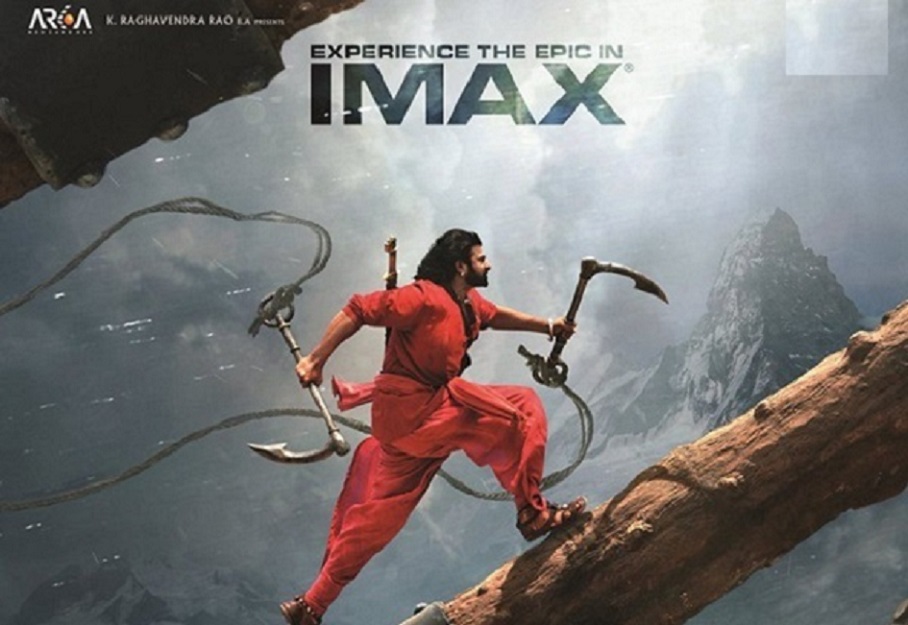

GNDN
Imax is an abbreviation for “Image Maximum” (Seth Porges | Forbes)
Screen Size: A standard IMAX theatre has a huge rectangular screen. A typical IMAX screen is 16 metres high by 22 metres wide (approximately 52 by 72 feet) (Marshall Brain | How Stuff Works)
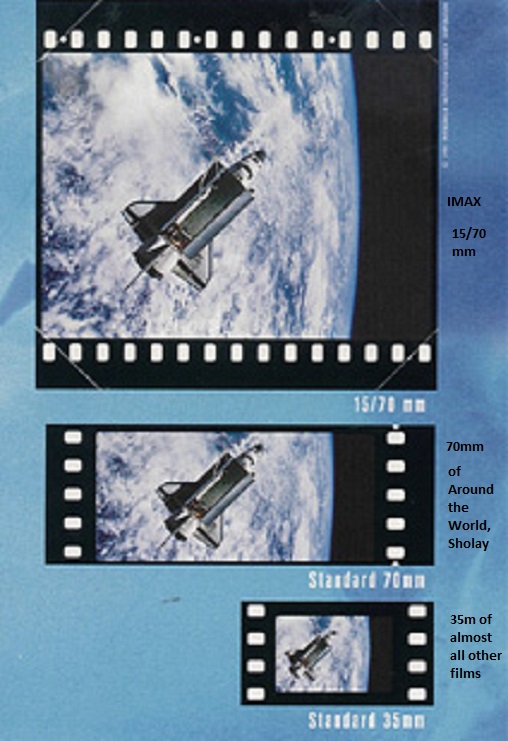
IEEE.ca
IMAX Melbourne claims to host the world’s largest cinema screen (measuring 32m/ 105ft in width by 23m/ 75ft in height [i.e. as high as a 7-storey building]). (IMAX Melbourne)
Film: Gigantic size In order to fill gigantic IMAX screens with a clear picture, IMAX films are shot and printed on huge film stock that is completely unique in the industry.
IMAX film stock is about 10 times larger than 35mm film stock. Most films that you see in [other] theatres come in a 35-millimetre format. The frame is 35 millimetres wide, and nearly square. Some theatre films come in a 70-millimetre format. This format provides roughly double the resolution, and the frame [has the same height- to- width proportion as] the width of the screen so there is no compression.

IMAX film is called the 15/70 film format. Each frame is 70 millimetres high and 15 perforations wide. In other words, the film size is about 10 times bigger than standard 35-millimetre film. This film size gives an IMAX movie clarity even on the huge screens in IMAX theatres. (Marshall Brain | How Stuff Works)
How Imax Film Is Fed Through Cameras
“To allow for as much screen space as possible, the film runs through the cameras and projectors sideways, with the sprocket holes at the top and bottom instead of the sides,” says Rich Gelfond, Imax's CEO. “And the audio track doesn’t appear on the film print, but on a separate program that is synced to the projector.” (Seth Porges | Forbes)
How Imax Film Is Fed Through Projectors
The film feeds in from the top of the projector.
A claw or sprocket arrangement advances the film one frame and holds it steady in front of the light.
A shutter opens and lets light shine through the film and lens onto the screen for a fraction of a second.
In an IMAX projector, the film is so heavy and large that a projector cannot use a claw to move it, and it is hard to hold such a big film frame perfectly flat with respect to the lens. Therefore, an IMAX projector is completely different from a normal projector:
The film moves through it horizontally rather than vertically.
A vacuum system sucks each image onto a piece of glass in front of the lens so that the image is oriented perfectly in front of the lens.
The shutter opens for a longer period of time than on a normal projector in order to let more light through. The bulb for the projector is a 15,000-watt, water-cooled xenon unit.
All of this advanced technology means that an IMAX projector weighs over 2 tons (1,800 kilograms) – the equivalent of a small car! That's what it takes to get such a bright, clear image onto such a tremendous screen. (Marshall Brain | How Stuff Works)
Cameras Imax Cameras Are Really Hard To Shoot With (Seth Porges | Forbes)
For filmmakers, large format means a large number of challenges—Imax cameras tend to be much heavier, louder, and generally more difficult to shoot with than their non-Imax counterparts. For example, the sheer size of the film stock means that the camera can only hold about three minutes at once. When that’s done, the filmmakers must spend several minutes reloading the reels. (Seth Porges | Forbes)
These challenges are one reason even the most high-profile (and high-budget) Imax movies tend to only actually use Imax cameras for select scenes. (Seth Porges | Forbes)
How To Spot A Scene Shot With Imax Cameras
Pro tip: When watching an Imax film, you can tell which scenes were shot using Imax cameras because the aspect ratio suddenly switches to a square-er, more vertical orientation. When you watch the same film on a non-Imax screen, the tops and bottoms of the image are actually letterboxed off, and you don't see the entire scene. (Seth Porges | Forbes)
Laser Projection Technology: (No Indian cinema has been listed as having this technology) MAX LASER uses a high-powered laser light engine (rather than traditional xenon lamps) in each of its twin 4K proprietary digital projectors to light the huge screen sheet; thus providing audiences with the sharp, bright, clear on screen images ever (IMAX Melbourne)
Theatre Geometry: It’s not just the large screen that makes a difference, it’s the shape of the auditorium and how the seats are placed. Many movie auditoriums are long and narrow, to get the most people in, with the screen way off at the far end. The distinctive shape of an IMAX theatre is designed to bring the audience not only closer to the screen, but better-positioned in relation to it. The result is an image that’s wider and higher than your field of view. (IMAX Melbourne)
Digital Remastering: DMR – or Digital Re-mastering – is a proprietary process that turns a movie into IMAX. IMAX spends months on location and in the editing room with the director and technical teams of each film – meticulously adjusting the saturation, contrast, brightness and hundreds of details in virtually every frame. (IMAX Melbourne)
IMAX Sound: You might find a custom, patented fully immersive 12.1 channel 15,000 watt digital speaker system in an IMAX theatre. It has a wider frequency response. (IMAX Melbourne)
IMAX 3D: 3D requires two images – one for the left eye and one for the right eye – to be projected onto the screen at the same time. Whereas most multiplex cinemas utilise one projector to do this, alternating the projection of each eye’s image, IMAX uses two projectors – one dedicated to each eye, ensuring brightness and clarity. Almost all 3D cinemas in multiplexes are compromised in their design, as they are retrofitted 2D cinemas. Some, like IMAX Melbourne, were designed and purpose built as 3D theatres from the outset. (IMAX Melbourne)
The authorship of this section:
Seth Porges | 7 Things You (Probably) Didn't Know About Imax | JUL 9, 2013 | Forbes Seth Porges is a writer and co-creator of Cloth for iOS
MARSHALL BRAIN | How IMAX Works | How Stuff Works
IMAX films worldwide: a brief history
IMAX, a Canadian product, began as a very-big screen format for screening promotional, industrial and commercial films at trade fairs.
The first IMAX film was a 17 minute promotional film called Tora no ko (Tiger Child/ Japanese language/ 1970) directed by Donald Brittain (of Canada). It was made for Expo '70, which was held in Osaka, Japan.
IMAX films (like many Cinerama films) continued to be projected on temporarily erected screens at trade fairs till, in 1986, the first permanent IMAX 3D cinema was built in Vancouver, British Columbia. Even this auditorium was created for a trade fair: Expo '86.
One of the first ‘entertaining’ film in IMAX was the 85-minute rockumentary The Rolling Stones: Live at the Max (1991), which encapsulated the band’s Steel Wheels tour of the previous year. A number of entertaining documentary films in IMAX meant for general audiences, many of them rooted in space travel or the interesting aspects of science, followed.
Cineastes woke up to the potential of IMAX with the screening of the riveting documentary Everest (1998/ 70mm-IMAX/ USA/ 45 minutes), which had stunning, almost-mountain sized (all right, hillock-sized) images of the world’s tallest mountain, many of them shot from angles never seen before.
By the late-1990s IMAX auditoria had started springing up even in middle- income countries and regions like China, Thailand and Eastern Europe.
South Asia remained untouched, because of low incomes.
Jean-Jacques Annaud’s Wings of Courage (France/ 3D/ 1995/ 40 minutes) was the first ‘dramatic picture’ shot for IMAX. The Oscar winning The Old Man and the Sea (1999/ Canada, Japan, Russia/ dir. Aleksandr Petrov), based on Hemingway’s classic, was a 20 minute animated film.
Fantasia 2000 (prod: Disney/ USA/ 2000/ 75 minutes) was the first full-length animated feature meant, initially, for IMAX alone.
The first full-length feature films released in IMAX were Apollo 13 (September 2002) and Star Wars Episode II: Attack of the Clones (November 2002). Both were IMAX DMR (Digital Media Remastering) films.
All ‘IMAX feature films’ released in 2002 and thereafter were entirely or substantially shot in other formats and then remastered digitally. Only a few exceptions were partially shot in IMAX. (Most 70mm films were shot in 35mm and then blown up to 70mm.)
It was as late as in May 2015 that the first feature film to be shot entirely in IMAX was announced. This was the two-part film, Avengers: Infinity War. A modified version of Arri's Alexa 65 digital camera is being used for the photography.
IMAX cinemas in South Asia
Imax.com, the official website of IMAX, lists IMAX theatres around the world. In South Asia only India and Pakistan have been listed.
The earliest IMAX cinemas of India
History
IMAX came to India through the same route of scientific and commercial films.
India was to get its first Imax dome theatre in 2000 (Rediff.com). Manmohan Shetty, the owner of Adlabs, one of the country's leading film processing companies, was the promoter of the IMAX dome theatre in India. The 520 seat Adlabs IMAX in Wadala, Mumbai opened in 2001, a few months behind schedule. It was not only India’s first IMAX theatre, in its time it claimed to have the world's largest screen. In 2001, as would have been seen above, but for perhaps four or five films with a story (and even those were short films) IMAX essentially meant interesting documentary films and shorts.
Rohit Khilnani of moneycontrol.com would reminisce six years later, ‘The dome had a mammoth screen, exellent picture quality, multi- speaker sound and the overall Imax experience attracted a lot of people in its first year…[It] hosted some of the biggest premieres and parties.’
IMAX 3D, in Ahmedabad’s Gujarat Science City, which opened in 2002, was India’s second IMAX theatre: and resolutely meant for scientific education and similar mentally uplifting documentaries.
Prasads IMAX in Hyderabad (estd. 2003) was India’s third IMAX cinema: and the first to declare that it was there to screen entertaining commercial films, as opposed to ones designed to enrich the mind. By 2003 it was possible to say that, though even then entertaining documentraies formed almost 90 per cent of all available IMAX films.
The Hindu wrote that in 2013 ‘Prasads Imax [was] the only theatre in India that offer[ed] technical feature [sic] like 15 perf/70mm film projection.’
The article The Seven IMAX Wonders of the World, published on the website Gizmodo, placed Prasads IMAX - Hyderabad at no. 7 in the world and wrote, ‘After the former World's Largest Screen (Adlabs IMAX in Mumbai) was torn down, the Prasads IMAX in Hyderabad stepped up to the plate. Prasads IMAX may not be the largest screen or even the largest dome in the world, but it is the single most popular theater in the world. Its 72-foot high, 95-foot wide screen is accompanied by 635 seats and a 12,000-watt sound system. The Prasads IMAX made its name by being the most attended screen in the world for major blockbusters like the Harry Potter and Spiderman movies.’
In 2005 a large IMAX auditorium called AEREN R IMAX was inaugurated in the Rap Adlabs Multiplex, which is in the Pacific Mall, Kaushambi, a suburb of Delhi located in U.P. It screened the usual documentary-style 3D and 2D IMAX films, often with your group being the only audience in the auditorium even on a weekend night.
Its biggest success was ‘Superman 3,’ some portions of which were in 3D. The drive from central Delhi was almost two hours in the evening (but around 45 minutes on the way back at night). Delhiites drove all the way for the pleasure of watching ‘Superman 3’ in 3D.
Soon, however, the residents of Delhi proper began to feel that the drive was not worth the while for lesser films. Big Cinemas acquired the theatre and after a while they stopped screening IMAX films.
The same was happening in Mumbai. Rohit Khilnani of moneycontrol.com wrote in 2007, ‘‘As the years went by, it became clear that the dome theatre was a failure. Now the biggest dome in the world is being demolished [six years after its inauguration] as there aren't any takers and for the Adlabs management, it is a financial and an emotional loss. COO, Adlabs Cinemas, Tushar Dhingra told CNBC-TV18, "There are not too many Imax format films and that's the reason we have to shut down the dome theatre. It is a huge loss for us. We will use the space for a 35 mm screen theatre, which will be the biggest 35 mm screen." Seeing this Rs 50 crore plus project go down like this in just six years is indeed sad.’
Even in 2013 there were ‘whispers that surely everybody who wants a movie screen the size of two barns has bought one already’ (Richard Warnica, CanadianBusiness)
The same had happened to Cinerama theatres in India, Pakistan, Sri Lanka before. Both Kapali, Bangalore and Pilot, Madras stopped screening Cinerama films. Pilot wound up and so, after a while, did the Cinerama format.
IMAX has proved more resilient.
Some 18% of the $6 million “Gravity” grossed in India came from Imax screens. (Naman Ramachandran, Variety)
Below is a list of all the IMAX theatres that ever existed in India or are under construction. Indpaedia has marked as ‘operational’ all cinemas that were listed as active on Imax.com, the official website of IMAX.
The international company IMAX Corporation launched plans to open 14 specialised theatres all across India by 2014. (Priyanka Srivastava, DailyMail) Most of these were still under construction in late 2015.
A list of IMAX theatres in India
Ahmedabad: IMAX 3D, Gujarat Science City, Village Hebatpur, Sola-Santej Road, Nr. Science City Cross Road, Ahmedabad, 382 481 (Operational)
Bangalore: PVR IMAX, The Forum, 21-22, Adugodi Main Rd., Koramangala, Bangalore, 560095 Estd 2012
Bangalore: PVR Xanders & IMAX, 1st Floor 40 Vittal Mallya Road, Bengaluru, 560001 (Operational)
Bangalore – INOX IMAX - Malleshwaram (Digital, 3D) (Operational)
Bhubaneswar: PVR IMAX (under construction)
Chennai: Luxe IMAX, 2nd Floor, No. 142, Velachery Main Rd, Velachery, Chennai, 600042 (Operational)
Chennai: Palazzo IMAX, Block No.5, Door Nos. 183-190,NSK Salai (Arcot Rd), Chennai, 600026 (Operational)
Delhi-NCR: i) AEREN R IMAX in the Rap Adlabs Multiplex, which is in the Pacific Mall, Kaushambi. (Perhaps not functioning any more)
ii) The Akshardham temple as an XMAX theatre (roughly half the size of a typical 8-storeyed IMAX theatre). XMAX is a cheaper substitute. The auditorium screens an IMAX-style film about the life of Shri Swaminarayan several times every day.
Hyderabad: Prasads IMAX.
Khandwa: Rr Palace, Nagchoon Rd, Khattalwada, Kasal Pura, Khandwa, Madhya Pradesh 450001, India
Kolkata: There was a large-sized cinema called IMAX in the Mani Square Mall, near the E.M. Bypass. It has been acquired by CineMAX but does not screen IMAX films.
Lucknow: Cinepolis IMAX (under construction)
Mumbai: Cinepolis IMAX
Mumbai: IMAX BIG Cinemas, Bhakti Park, Anik Wadala Link Road, Mumbai, Maharashtra 400037 (Operational)
Mumbai: PVR Phoenix IMAX (Digital 3D), 462 Senapati Bapat Marg, Mumbai, 400013 Estd 2013 (Operational)
Mumbai – INOX IMAX – Inox R-City Mall Ghatkoper & Imax, 3rd Floor, R City Mall, Lbs Marg, Ghatkoper West, Mumbai, India 400086 (Digital, 3D) (Operational)
NOIDA: Logix City Center IMAX {3D & 4D} (under construction)
Noida – PVR Superplex-IMAX [Noida Sector-32] (Digital, 3D)
Pune – Cinepolis IMAX, Westend Mall Aundh – (Digital, 3D) (Operational)
Punjab (in which city?): IMAX DOME
Thane: Cinepolis Vivana Mall & IMAX, Eastern Express Hwy, Next to Jupiter Hospital, Thane, 400606 (Operational)
(On 23 July 2017 the official website of IMAX listed the names of 11 operational IMAX theatres in India.)
IMAX cinemas in Pakistan
Lahore: Cinestar IMAX Cinema (Digital 3D) (Operational) Inaugurated: June 26, 2014
IMAX films supposed to have been made in India
2001: India’s ‘first IMAX film’ is launched
In 2001, only a year after the first full-length cartoon feature Fantasia 2000, only three years after the Everest documentary and a year before the world’s first full-length IMAX feature film with human actors, there was excitement in Filmistan. India was going to get its first IMAX film.
Rediff’s Suparn Verma reflected the enthusiasm with which the news was received. Verma’s article was accompanied by a Mughal miniature-style painting of star Aishwarya Rai as Mumtaz Mahal (reproduced on this page). Verma wrote:
<Before the end of 2002, India will have its first IMAX film: Taj Mahal, starring Aishwarya Rai as Mumtaz Mahal. The initiative for this project goes to the husband-wife duo of Bharat Bala and Kanika Myer… The duo saw their first IMAX film in South Africa…
<Kanika [said]: "Every time we shoot, we will have to fly in 3,000 kgs of equipment -- the cameras come from Los Angeles, the film comes from Rochester. In fact, our entire crew is being flown in, we have Academy Award winner line producer, Scott Swofford. Our cameraman is Reed Smoot.
<Aishwarya does the honours as Mumtaz Mahal. Rumours are rife that Amitabh Bachchan is being signed in for a key role. And Kanika doesn't deny it when asked if Shah Jahan might be a Hollywood actor. She says, mysteriously, "Just wait and see." [India waited, but saw nothing.]
<A R Rahman will compose the music (BBP)… to Sooni Taraporewala's script.
<The IMAX version of the film will be for only an hour. [This was the international trend in 2001, and till much later. IMAX versions were always 20 to 30 minutes shorter than the 35mm version.] But, admits Bala, "We are working out the script for the 35mm version so that everyone can enjoy the story of Taj Mahal."
<The film will be shot in English. It will also have an [sic] Hindi version.>
2002 came and went, without any sign of the film. That happens. Films do get delyed in India. Then, a few years later, the official website of Bharat Bala Productions informed us, ‘Taj Mahal- The Heart of India (50% complete) is India’s first IMAX venture…The film stars the beautiful Aishwarya Rai, an internationally acclaimed actor, as Mumtaz Mahal.’
To augment the story of ‘50% complete,’ Bharat Bala Productions officially posted a 3.44 minute promotional video on Vimeo, called Taj Mahal (IMAX), ‘from bharatbala productions’. The video is also available on YouTube, but was posted by someone else. The video has a first rate song in the background, very obviously composed by A.R. Rahman. However, the images shown (many of which have been reproduced on this page) leave the viewer nonplussed. We mainly see random actors from behind or from a distance. On the two instances that they are shown closer up, their faces cannot be seen clearly.
‘India’s first 70mm film,’ too, had been announced so many times. Alexander and Chanakya, Dilip Kumar’s Kaar Begaar, Behl’s Gold Medal and other films had been launched as ‘India’s first 70mm film.’ The first two were never made, while the third was completed, with a different cast, in 35mm.
Taj Mahal- The Heart of India, too, was not destined to be India’s first IMAX film.
Taj Mahal - A Monument Of Love (2003)
On [NowRunning.com] there is a curious page devoted to a film called Taj Mahal - A Monument Of Love (IMAX) (2003/ English/ Director: Robin Khosla). That the film is in IMAX has been mentioned twice. However, on imdb.com there is nothing about IMAX, and under ‘technical specifications’ we are told that this was a 35mm film.
Indian films actually made in IMAX
Dhoom 3: India’s first IMAX film
Sources include: Etan Vlessing, The Hollywood Reporter, IndiaTimes, Variety
In March 2013 Yash Raj Films and Imax entered into an agreement to make three films that could be screened in Imax, including Dhoom 3 and Paani.
In December 2013 Dhoom 3 became the first Indian film to be released in Imax. While the majority of its prints were in 35mm-Cinemascope (as is the case with all Imax feature films), it was initially screened in IMAX in 13 international territories, namely Australia, Canada, Dubai, Hong Kong, (India itself), Kuwait, Malaysia, the Netherlands, New Zealand, Qatar, Singapore, South Africa, the U.K. and the U.S.A.
‘With 37 Imax screens across 13 territories, including 5 in North America and 13 in the U.K. Yash Raj Films’ “Dhoom 3” is the largest non-Hollywood Imax bow. A significant percentage of its worldwide $60 million plus gross is from Imax screens, with many reporting full houses.’ Variety had reported in 2014.
For more than a year Dhoom 3 was the highest grossing film in Indian history, till PK dethroned it.
Tickets of Dhoom 3 were exorbitantly priced
The IMAX screens of Mumbai priced tickets for Dhoom 3 at Rs.400-600 for the morning shows and Rs.700-900 for the night shows. At the time multiplexes charged between Rs.300-Rs.400 for Dhoom 3 and Gaiety Galaxy, a single screen, just Rs.70-Rs.90. Thus, the IMAX cinemas changed 225% more than the multiplexes and 1,000% more than most single-screens.
Krrish 3 abandons 3D IMAX plans
In 2013 Shalvi Mangaokar, Hindustan Times quoted a trade source as saying, “Rakesh Roshan wanted to release the movie in Imax. However, Aditya Chopra made the first move. He seems to have a deal with Imax, as per which, Dhoom:3 will be the first Bollywood release in that format, resultantly blocking any other film attempting the same.”
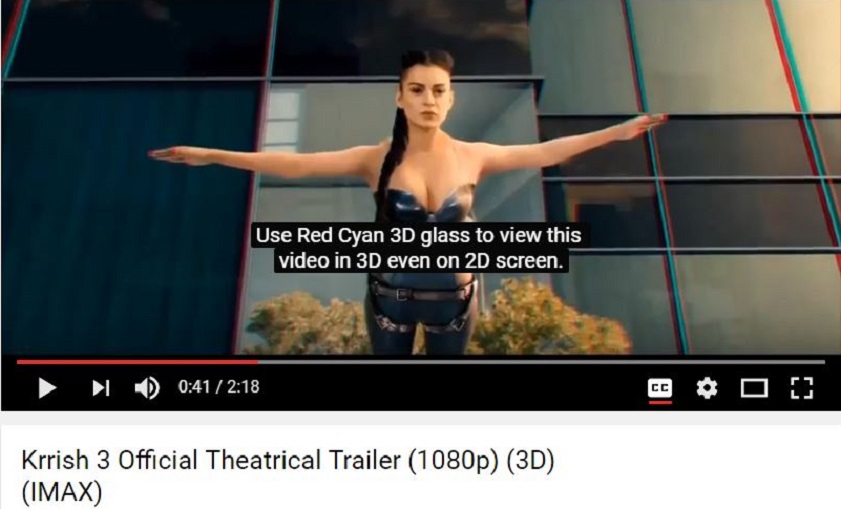
Above: Kangana Ranaut
The source added, “For an Imax release, you first need to digitally convert it for the huge screen with an extremely high resolution. The process takes two to three months.”
Rakesh Roshan told HT “I did have plans of releasing the film in the Imax format.” However, he had finalised a November 3, 2013 release for Krrish 3, which was not possible in IMAX because of Chopra’s ‘first in India’ contract with IMAX, which would have meant delaying the release of Krrish3 by at least two months, Krrish3 was not converted into 3D IMAX, as originally planned.
(The official theatrical trailer of Krrish 3, released in August 2013, a few months before the film’s actual release, was still saying that the film would be in 3D Imax.)
Paani was to have been the next Imax film
Director Shekhar Kapur's Paani, also produced by Yash Raj, was expected to be the next Indian Imax film
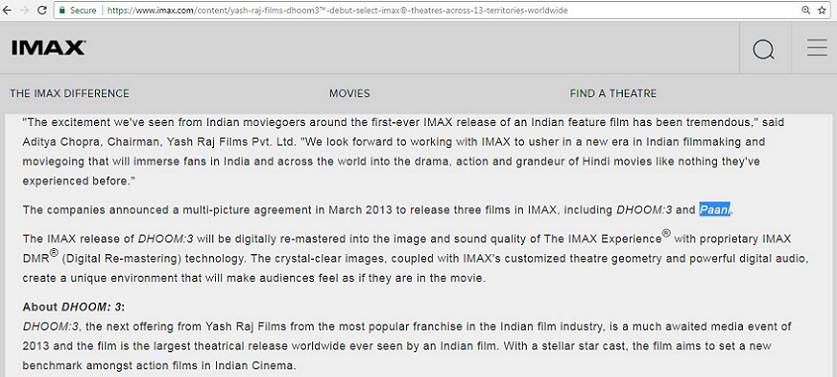
Mr Kapur is one of India's most talented filmmakers. His films are intelligent and yet they entertain. However, he often starts films that he never completes (Time Machine), or takes ages to do so (Paani has been talked about for years now). So, if IMAX's future in India was going to be linked to its 3-film deal with Yash Raj, and Mr Kapur's Paani had to be India's second Imax film, till the release of which no other Indian film could be released in IMAX, then there might never have been another Indian film in Imax, given Mr Kapur's track record so far.
Happily, that did not happen.
Bang Bang! the 2nd Indian IMAX film
Prints of the Hrithik Roshan-Katrina Kaif starrer ‘Bang Bang!’ (2014) were digitally re-mastered into IMAX format. Economic Times
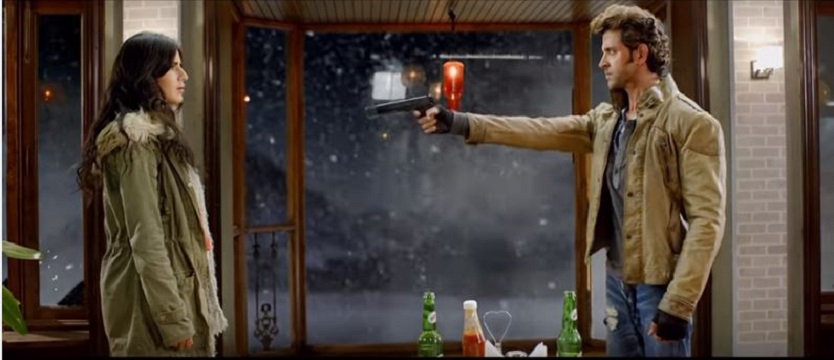
In 2013, Financial Express reminds us, Hrithik Roshan and Rakesh Roshan had wanted to bring their Krrish 3 on an IMAX format. However since the process of conversion from a regular to IMAX format needed two to three months, the idea was dropped.
Since IMAX was still in its infancy in India, only viewers in Mumbai, Bangalore, Hyderabad, Chennai and Ahmedabad were able to partake of this experience.
The official website of IMAX said that Bang Bang! was digitally re-mastered in the immersive IMAX format and released in IMAX® theatres across India and select global locations… In addition, FIP India (Fox International Productions) released Bang Bang! on more than 4,000 screens in India, with more than 800 screens outside of India across 46 countries, including 250-plus screens in the U.S., making it the widest release ever for a Bollywood film [at the time].
Directed by Siddharth Raj Anand, and starring Hrithik Roshan and Katrina Kaif, Bang Bang! was an official remake of the Fox film Knight and Day, starring Tom Cruise and Cameron Diaz, which grossed $3.3 million at the Indian box office in 2010. Bang Bang! was released in three languages – Hindi, Tamil and Telugu.
The IMAX release of Bang Bang! was digitally re-mastered into the image and sound quality of The IMAX Experience® with proprietary IMAX DMR® (Digital Re-mastering) technology.
How many IMAX screens was Bang Bang! screened on outside India? This information is not available.
However, Bolly Spice observed that ‘The hotly anticipated adventure romance BANG BANG starring Bollywood mega stars Hrithik Roshan and Katrina Kaif got even hotter with an exclusive IMAX run premiering in Florida. The only IMAX run for BANG BANG in the entire United States took place at the Challenger Learning Center in Tallahassee, for two shows every night.
The mega-budget Bang Bang! did not give its producers bang for their buck. It earned Rs181.03 crore (net), which was the 3rd highest ‘net’ collection of 2014. However, given the film’s budget, it was only a B+ (mildly profitable) film, being the no. 11 or 17 Hindi-Urdu film of the year in terms of returns on investment. However, worldwide the film grossed Rs 340 crore.
Bahubali 2: The Conclusion (2017): the 3rd Indian IMAX film
Bahubali 2: The Conclusion (2017) was the third Indian production to be released in IMAX.
The IMAX version of 'Baahubali 2 : The Conclusion' was available only in Telugu and Hindi. Although the makers released the movie in Tamil and Malayalam as well the IMAX format viewing is restricted only to the above mentioned languages. | IndiaTimes/ The Times of India
Bahubali 2: The Conclusion (2017) grossed approximately $2.3 million during its opening weekend in 66 select IMAX theatres across India, North America, Australia, the Middle East and Africa. In India, the film grossed $334,000 from 10 IMAX® theatres – making it the highest-grossing IMAX opening weekend ever in the market.
The film also had a strong performance in its limited run at the North American box office this weekend – with IMAX generating approximately $1.8 million from 45 IMAX theatres for a robust $40,000 per-screen-average. This marks IMAX's biggest [US] domestic opening of a foreign language film. (Finance.Yahoo)
Padmaavat, India’s 4th IMAX film was the first in 3D IMAX
Padmaavat sets new record for IMAX in India, garners over Rs 29 cr from just 12 screens | Jan,31 2018| PTI Padmaavat becomes first Indian movie to release in IMAX 3D |Jan 14, 2018 |Mumbai Mirror
The makers of Padmaavat, the film announced that 'Padmaavat' is the first Indian film that will have a global IMAX 3D release. The film was also released in Tamil and Telugu, in addition to Hindi.
Padmaavat garnered a record $461,000 (over Rs 29 crore) opening weekend box office from 12 IMAX theatres in India. The figures were announced by IMAX Corporation and Viacom18 Motion Pictures on 30 Jan 2018 via a statement.
Padmaavat was also distributed to an additional 42 IMAX theatres in 10 markets outside of India, including North America, Australia, the Middle East, Africa and the UK.
Globally, the film grossed $1.3 million across a total of 54 IMAX theatres in its opening weekend run for a $24,000 per-screen average. An epic period drama, it marks the fourth Indian local-language production to be released in IMAX globally.
The IMAX release of Padmaavat was digitally re-mastered into the image and sound quality of an IMAX 3D experience.
Gold: India’s first medium-budget film in IMAX
It is generally agreed that Gold (2018) was made on a budget of between ₹45 and 50 crore. In any case it was a medium-, rather than big- budget film. Gold was one of the successful films of 2018.
2.0 (2018)
2.0 (2018?) is said to be the biggest budget film ever made in India. Therefore, it was only to be expected that it would also be screened in IMAX, in 3D at that.
Thugs of Hindostan (2018?)
Thugs of Hindostan (2018) is unlikely to be as unrealistically overpriced as 2.0, but it is being made by Yash Raj, the production house that has made some of India’s most expensive (and successful) films, and which brought IMAX to India in the first place.
Manikarnika - The Queen Of Jhansi (2019)
Manikarnika - The Queen Of Jhansi (2019) has been made with a budget of Rs125 crore, which is big by normal standards but medium compared to other recent IMAX releases like 2.0 and Thugs.
Saaho (2019)
Starring Prabhas and Shraddha Kapoor
K.G.F. Chapter 2 (2022)/ The first Kannada film in IMAX
‘KGF Chapter 2’ was the first Kannada film in IMAX It was also released in Hindi, Tamil, and Telugu.
Shamshera (2022)
It was releaded in Hindi, Tamil, and Telugu.
RRR (2022)
RRR was released in IMAX 3D and was one of the most successful Indian films ever
Samrat Prithviraj
Samrat Prithviraj (2022) had a below average run at the box office
Brahmāstra
Brahmāstra (2022) in IMAX 3D was very successful at the box office
Ponniyin Selvan 1
Ponniyin Selvan 1 (2022) was a massive hit and released in IMAX in Tamil and Hindi but not all languages
Pathaan (2023)
Pathaan (2023)
Bholaa (2023)
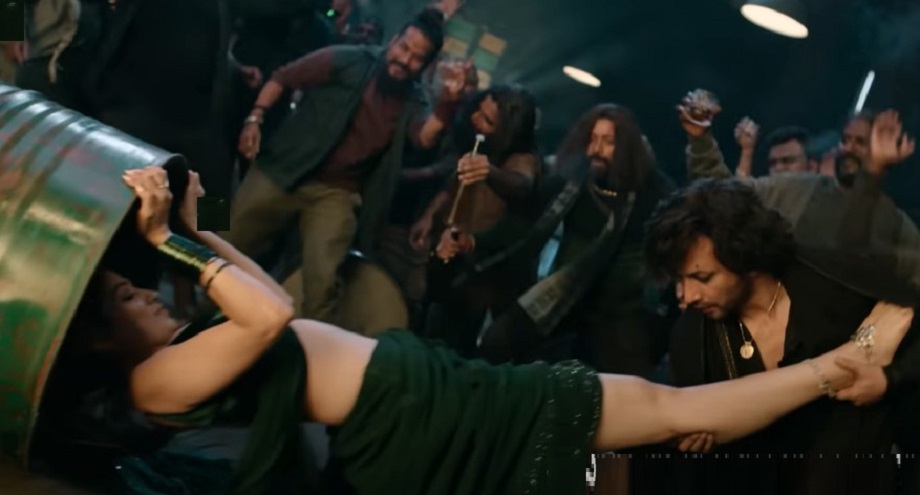
Bholaa (2023)
Ponniyin Selvan 2 (2023)
Ponniyin Selvan 2 (2023)
Adipurush (2023)
See also Adipurush or How The Ramayan should be shown in art, Leelas, cinema/ TV
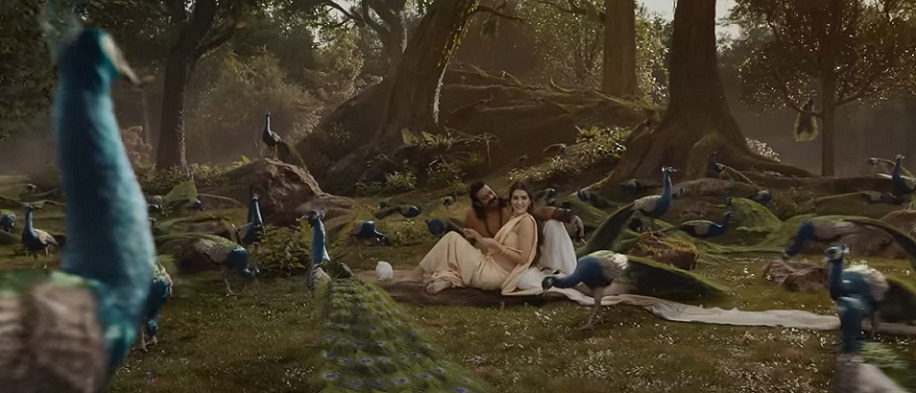
Itwas a box office disaster not only because of its lack of reverence but also because its vfx came in for severe criticism

Adipurush (2023) was supposed to be released in IMAX 3D
Itwas a box office disaster not only because of its lack of reverence but also because its vfx came in for severe criticism
Janani K of India Today wrote on Jun 12, 2023 a few days before the film’s release: :
“Since DC's superhero film, The Flash, is releasing on the same date, Warner Bros. Pictures had blocked the IMAX screens in India well in advance. Hence, theatres in India will not be able to screen (Adipurush (2023)) in the IMAX format. This is indeed a huge blow to fans, who are waiting with anticipation.”
Tiger 3 (2023)
File: Tiger 3b.png|Katrina Kaif and friend in Tiger 3 (2023) |frame|500px File: Tiger 3a.png|Katrina Kaif and friend in Tiger 3 (2023) |frame|500px Katrina Kaif and friend in Tiger 3 (2023)
Leo (2023)
Leo (2023) Thalapathy Vijay, child and Trisha emerging from a temple in Himachal Pradesh
The no.1 or 2 Tamil hit of the year
The 2023 Indian film Leo was released worldwide on October 19, 2023, in both standard and IMAX formats. However, some IMAX premieres were canceled abroad due to the IMAX copies not being ready.
Leo was shot using IMAX-certified cameras, making it Vijay's first film to be released in IMAX in India.
Salaar: Cease Fire Part 1 (2023)
The no. 1 Telugu hit of the year
L2 E.M.P.U.R.A.A.N. (2025): The first Malayalam film in IMAX
Within 48 hours of its release, the film became the highest grosser of the first three months of 2025.
No further updates: Except for firsts in individual languages
At Indpaedia, the rule is that we cover the first few films based on every new technology, e.g., the first few colour films, the first few 70MM films, the first few Cinemascope films, and, therefore, only the first few Imax films.
Now that IMAX is mainstream in Indian cinema, we will make no further additions. However, if we have omitted any Imax film released before 31 December 2023, please bring it to our attention, and we will add it, gratefully acknowledging your contribution.
Also if we miss the first IMAX film in any Indian language, we would be grateful if you could let us know.
Additional information may please be sent as messages to the Facebook community, Indpaedia.com.
See also
70mm films in India/ South Asia
CinemaScope films in Bangladesh, India, Nepal, Pakistan, Sri Lanka
Cinerama theatres in India, Pakistan, Sri Lanka
IMAX in India
